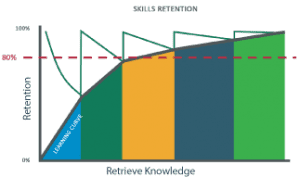The Importance of Skills Maintenance
10 October 2016
As many Australia operators, and their service providers, settle into steady-state operations the workforce is entering a different requirement for skill development. Under these more stable circumstances, it is vitally important to maintain a focus on safety and the prevention of major accident events. We need to ensure that the workforce capability remains current and continues to address the needs of the market in relevant in a steady-state environment.
ERGT continues to provide Nationally Recognised Training to a standard of quality and rigour that we deem to be vitally important.
Our purpose is to keep people safe in a hazardous workplace, so there is no room for compromise.
Currently our industry competency frameworks ensure that we maintain the level of capability equivalent to that required of an industry entrant. There is less emphasis or requirement to cater for those experienced operators in the industry and hence a greater potential for this workforce to neglect the messages in their ongoing training that may become a “tick & flick” exercise.
1-3-7-12 Weeks
“Staggered and varying deliberate practice over a range of weeks will embed learning and assist retention of critical elements” (Driscoll, Hagman)
Meeting Industry Capability Needs
Industry employees are required to maintain their skills over an extended career in a steady-state environment and ERGT has considered how best to address the needs of this experienced group. ERGT has designed training to appeal to those more experienced employees with courses that include through a variety of experiences in a broader range of workplace contexts. We will provide different learning experiences each time an employee returns for skills maintenance training. It will no longer be more of the same training over and over, but an opportunity to reinforce current skills and broaden capability over time – a well-researched learning strategy for skill retention.
…the similarity of the training (acquisition) and work (retention) environments plays a major role in the retention of skills and knowledge over periods of non use or non practice… (Arthur, Bennett, Stanush & McNelly)
Skill Retention
Industry regulators drive safety practices in many ways. One way is to ensure that operators maintain a level of training to avoid skills declining over time. After 365 days there is substantial skill loss with non-practice or non-use. (Shute/Gatwick)
Hence, in high risk industries, where our ability to practice on the job is limited, it is essential that the learning environment is closely related to the work context so transference of learning and retention of skills can be most effective. ERGT has designed our facilities to replicate the workplace. Our ‘platform’ allows us to create an immersive training experience that cannot be created in a training room. Our scenario-based training methodology creates a virtual environment that lectures, power points and a picture can’t mimic.
“Decay is mostly represented as a degraded process when there is no follow-up training, drills and exercises or use of the new skill. It begins almost immediately.” (Winifred)
50-75%
“Skill decay is greatly reduced when learning takes place in a realistic simulated workplace.” (Barclay et al.)
How We Can Support High-Risk Industries
To ensure the workforce acquires and maintains the skills needed over periods of non-use or non-practice ERGT provides a safe and realistic learning environment where trainees can be assured their competence is reviewed and re-assessed on a regular basis but without repetition. We partner with organisations and individuals to ensure that skills required and application of learning replicates the workplace context closely. The more realistic the learning, the more likely the application in the workplace will lead to a safer industry.

>80%
“For critical skills such as Incident Command for OIM’s it would not be appropriate to fall below an 80% skill level.” (NOPSEMA)
